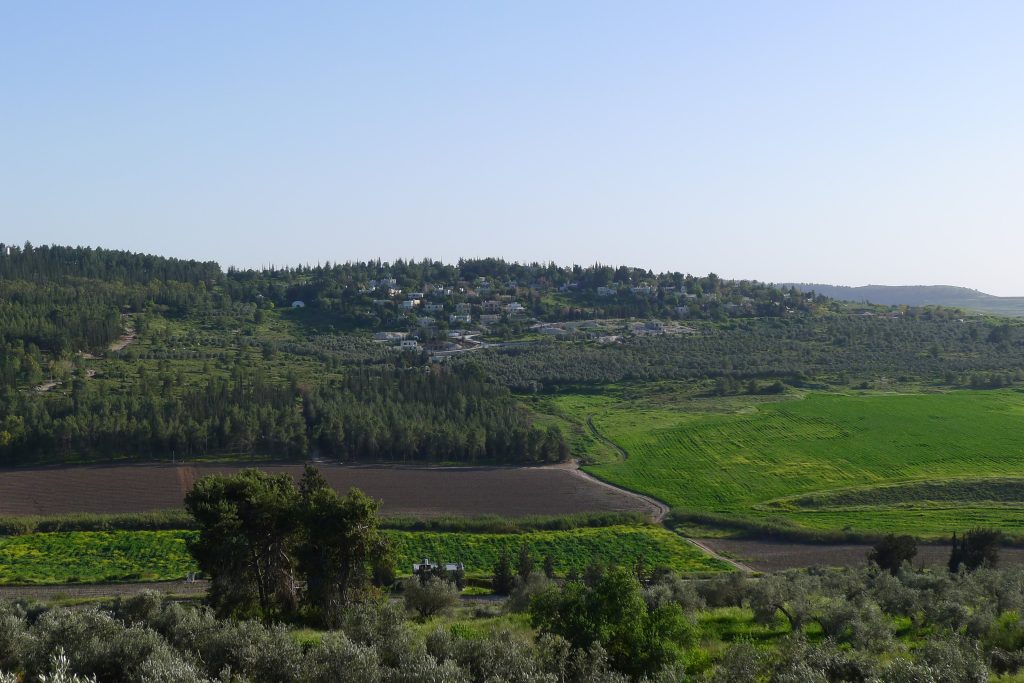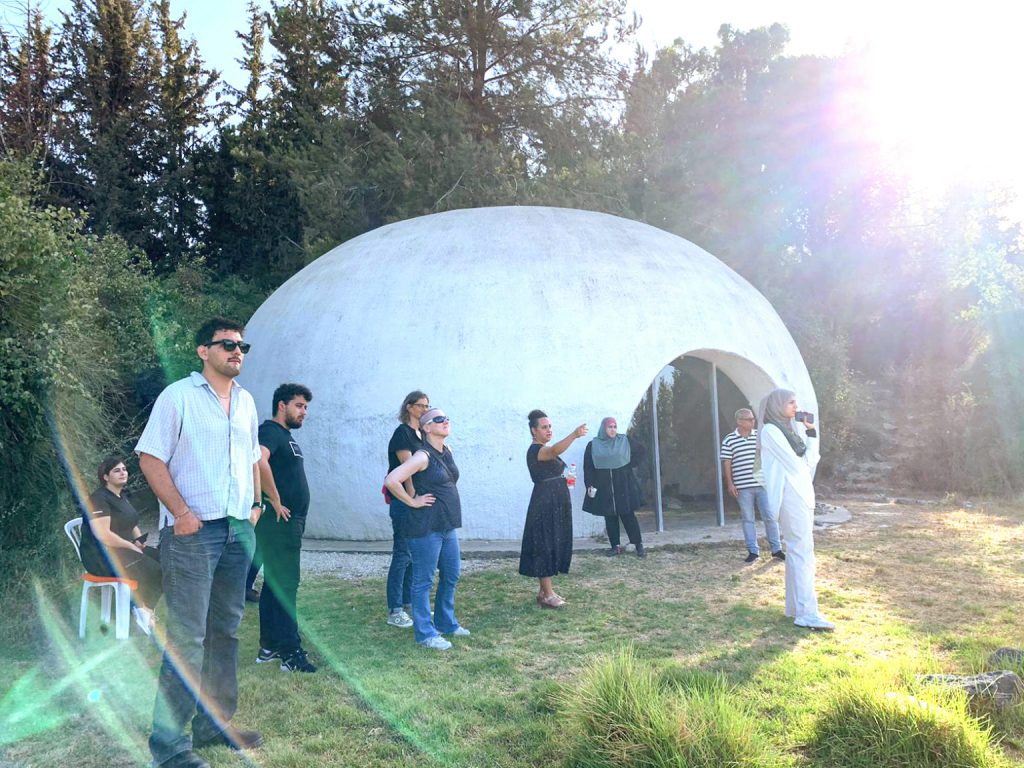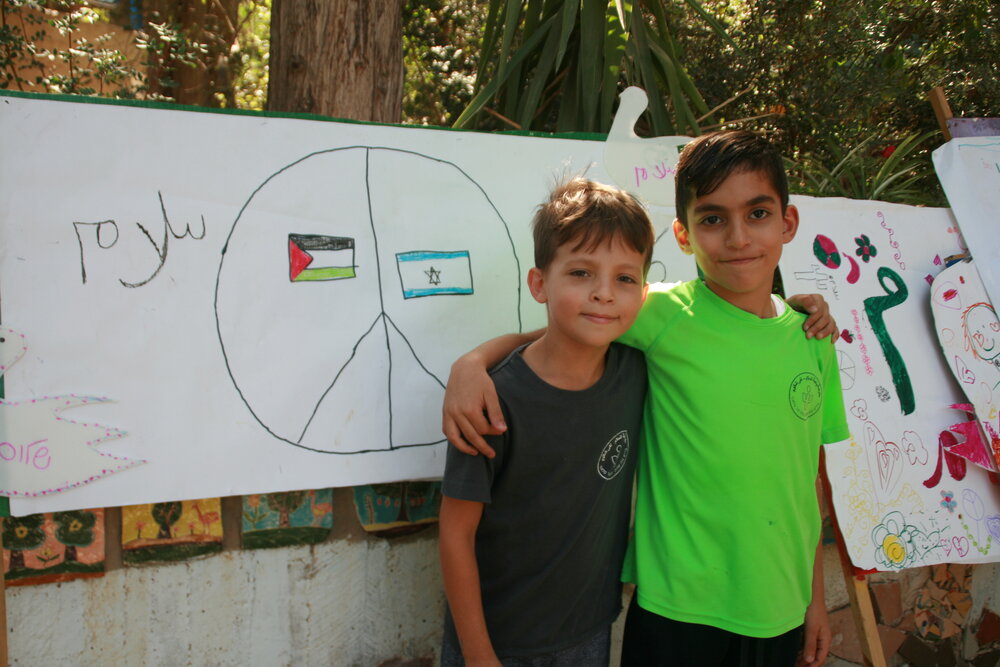«I decided to come and live in this village 21 years ago because I wanted something different for my children». Speaking is Samah Salaime, resident of the Oasis of Peace. «It is already clear from the name what this place is based on: Wahat al-Salam – Neve Shalom is a double name, in Arabic and Hebrew, which means precisely “oasis of peace”», said Giulia Ceccutti, a member of the board of directors of the Associazione Italiana Amici di Neve Shalom Wahat al Salam, which supports and tries to make this reality known from here.
Wahat al-Salam – Neve Shalom is a village located on a hill surrounded by the Ayalon valley where Jews and Palestinians peacefully coexist. This village, located in Israel, is the only community that exists today where Jews and Palestinians, all Israeli citizens, live together by choice and in harmony.
Founded in the early 1970s by the intuition of Bruno Hussar, a Dominican father of Jewish origin, it still represents a model of peaceful coexistence between these two peoples who have been at war for decades, and a demonstration that an alternative is possible.

«Father Hussar had this dream: to create a place that was a school for peace and that also had a religious slant. A place for the three great religions to live together: Christianity, Judaism and Islam», says Julia. «The Dominican father managed to obtain land from the Latrun monastery next door. His idea was followed by some couples, Jewish and Palestinian, who started to live together on this hill. It was a place where there was nothing, at the beginning they built everything: the road, the sewage, the electricity, the water supply». Today, the Oasis of Peace is like a big village, equidistant from Jerusalem and Tel Aviv, administered by an Arab mayor and consisting of about eighty families. There is a rather long waiting list of families who would like to move there, so an expansion plan was born.
«The reason my husband and I moved here is that we wanted something different for our children, we didn’t want them to experience the racism and segregation we grew up in. My husband heard about this village and the mixed school, at the time we were looking for an educational alternative for our first child. So, we got curious and decided to visit the village. We liked it very much, we felt the people were happy there, so we moved there. My second and third children were born there. Then after a while we became active in the community». This is the story of Samah, a Palestinian woman who has experienced the occupation on her own skin and that of her family. For 21 years now, Samah has lived in the Oasis with her husband and three children.
«Within the village and in all the institutions that are part of it, it is very important that Jews and Arabs are present in equal numbers», continues Giulia Ceccutti, who emphasizes that the educational institutions within the village reflect in every way the ideals on which the community is founded.
«Within the village there is only one place of worship: it is a circular dome that is called Dumia-Sakinah and means ‘the house of silence’. It is a space devoid of religious symbols, dedicated to silence as a universal language for all faiths and even for those who profess no religion». Another of the institutions pioneered by the Oasis is the bilingual and bi-national school, where Jewish and Palestinian children, who are always equal in number, learn to write and speak in both languages. «Being able to express oneself well in the language of the other and to understand him/her is precisely the first step to getting to know him/her and to, one day, build a dialogue that is on an equal footing». Another central place for the community is the School for Peace, a space where activities, workshops are held and whose aim is to address any conflict through dialogue and mutual understanding.

«There were moments of tension, but they were short-lived, because our method is to discuss internal conflicts, always trying to maintain a balance», said Samah.
«It is called Oasis of Peace but in reality, it is a community strongly immersed in the Israeli-Palestinian conflict and there are also daily conflicts, also due to the fact that it is a small community», Giulia continued, «So yes, there are internal conflicts. One of the most difficult moments in recent years was during the last war in Gaza in 2021, because clearly, although everyone was against that war, it was obviously experienced differently by Jews and Palestinians. But we try to address all conflicts through dialogue».
Moreover, the village has been periodically attacked over the years and in various ways. Both with vandalism, such as offensive writing against Palestinians or flat tyres, but the most serious episode was when they set fire to the Peace School in 2020. In this fire, in which there were no injuries, the main building was destroyed.

«There are other mixed cities, such as Tel Aviv or Jerusalem, but this village is a model because it is unique: here people have freely chosen to come and live in a community based on a certain kind of principles». Samah speaks proudly of her choice and of her village. «It was an innovative and very courageous project, especially because it was created more than 40 years ago. Actually, to this day there are many people who would like to replicate this model and build more villages like this one, but the Israeli government prevents them from doing so. We are the first and only (at least for now) community of this type and we are lucky to have land that gave us the monastery, otherwise we too would probably not exist today.
I think it will take many years before this model can become a reality for the whole of Israel-Palestine, but that one day, when the regime changes, the Oasis can be replicated and become the beginning of a new peace. I believe it is the only way we can live: in peace, in equality, within a democratic state based on mutual respect and understanding. It is certainly difficult as a project, but you have to believe in it and when the people are ready it can happen. We who live here are normal people, as are the people outside, if we did it, everyone can do it».
Read also: Quell’Oasi di Pace in Israele luogo di convivenza

